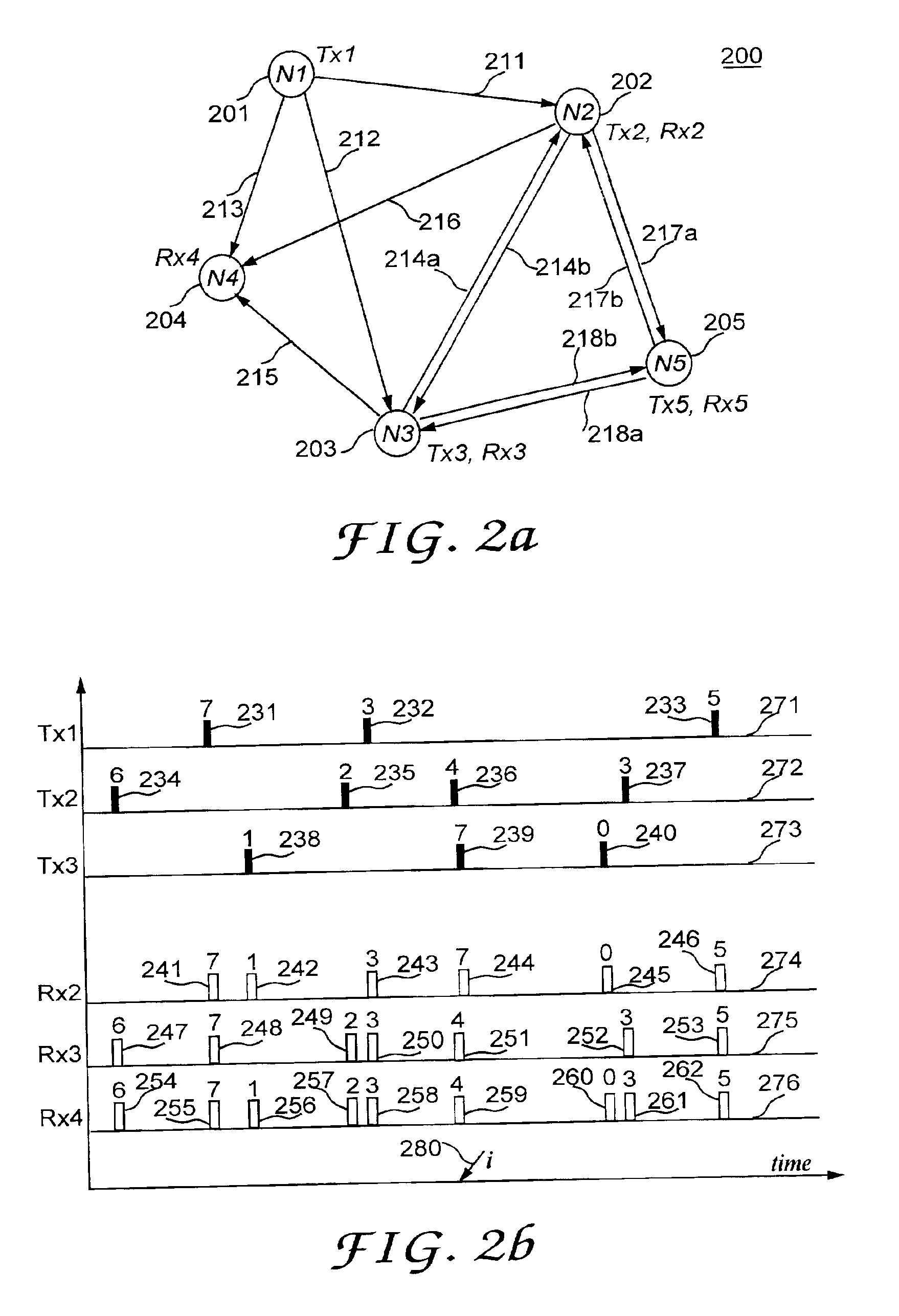Synchronization and access of the nodes in a communications network
a communication network and node technology, applied in the field of network technology, can solve the problems of unnecessarily demanding prior art techniques and insufficient demands of prior art techniques
- Summary
- Abstract
- Description
- Claims
- Application Information
AI Technical Summary
Benefits of technology
Problems solved by technology
Method used
Image
Examples
Embodiment Construction
[0042]FIG. 1a depicts a graph of an illustrative network 100 in the prior art that comprises five nodes, Node 101 through Node 105, respectively. As the topology of FIG. 1a suggests, not all of the nodes can communicate with each other directly; only those nodes that are connected by one of paths 111 through 118 can communicate directly. For example, node 105 cannot communicate with node 101 directly, but only indirectly through other nodes. In accordance with the prior art: (1) each node is capable of bi-directional communication between two nodes, (2) a node can broadcast to one or more nodes simultaneously, and (3) the nodes use frequency hopping and wireless technologies to communicate amongst themselves.
[0043]FIG. 1b depicts a graph of the timing of the transmissions amongst three of the nodes in FIG. 1a: node 101, node 102 and node 103. When network 100 is synchronized, all of the transmitters hop (i.e., change their respective transmission frequency) and all of the receivers ...
PUM
 Login to View More
Login to View More Abstract
Description
Claims
Application Information
 Login to View More
Login to View More - R&D
- Intellectual Property
- Life Sciences
- Materials
- Tech Scout
- Unparalleled Data Quality
- Higher Quality Content
- 60% Fewer Hallucinations
Browse by: Latest US Patents, China's latest patents, Technical Efficacy Thesaurus, Application Domain, Technology Topic, Popular Technical Reports.
© 2025 PatSnap. All rights reserved.Legal|Privacy policy|Modern Slavery Act Transparency Statement|Sitemap|About US| Contact US: help@patsnap.com



